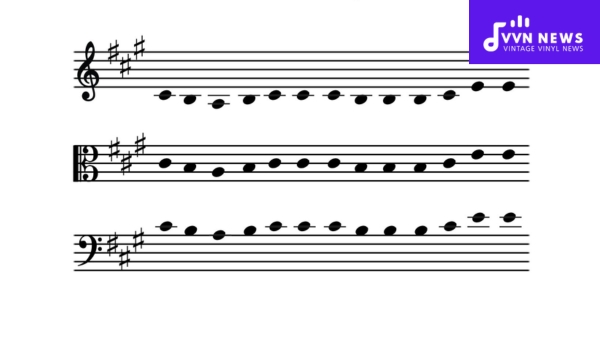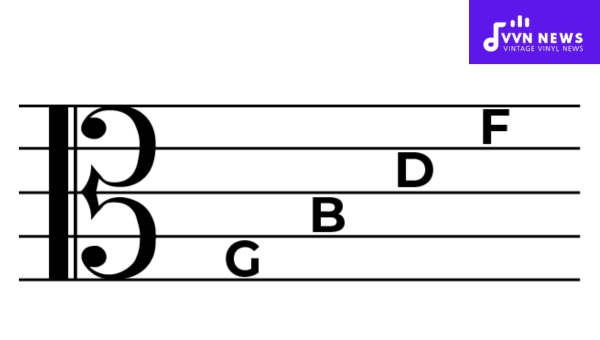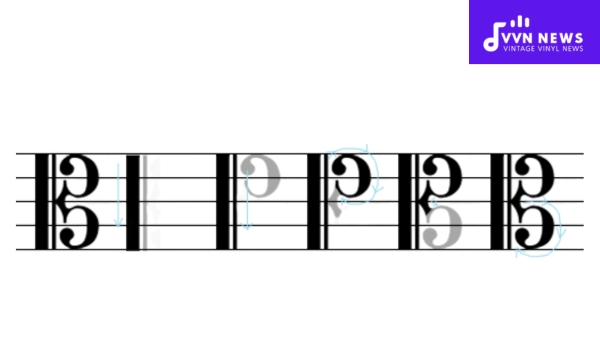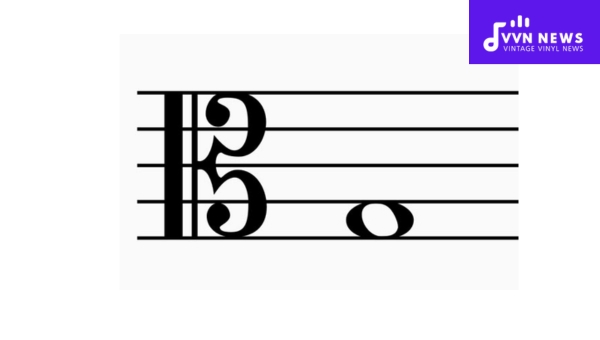Navigating the world of music notation can sometimes feel akin to deciphering an ancient script. There’s more to it than just the standard ‘every good boy does fine’ – and that’s where the alto clef comes in.
An unconventional and underappreciated member of the Clef family, it’s time we gave it some well-deserved limelight.
Faced with the alto clef, many seasoned musicians might still feel a flutter of panic, scrambling through vague memories from years-ago music theory classes.
Once you peel back the layers of intimidation, you’ll find that this seeming beast is but a harmless fellow. This blog post will guide you along a journey: a deep dive into this lesser-known yet fascinating piece of our musical language.
What is the Alto Clef?
The alto clef, also known as the ‘C clef’ because its center indicates the position of the note C, is indeed a musical marvel.

Its beauty lies in its unique middle positioning on the stave. In other words, where many of us learned that ‘F’ or ‘G’ sit comfortably in our basic treble and bass clefs, with the alto clef, it’s all about note ‘C’.
This third line wonder provides alternative staff positions for notes and has been specifically designed to reduce extreme ledger lines for instruments within a particular range.
What is the purpose of the Alto Clef?
In essence, the Alto Clef serves a simple yet significant purpose: allowing each note to be placed accurately on the five-line staff.
The clef’s symbol identifies the precise pitch of one specific line and consequently frames where every other note lies.
- Simplifying Adjustments: Designed for medium-high range instruments, like the viola, the Alto Clef ensures that most of their music fits within the staff with fewer ledger lines. So if you’re a violist, it just makes your life and finger mapping that much easier!
- Avoiding Overlapping Notes: When several instruments are playing together, different clefs help avoid overlapping notes on sheet music. This separation makes sight-reading more manageable for musicians in an ensemble or orchestra.
- Reflecting Historical Tradition: The use of diverse clefs also honors traditional musical notation practices that have evolved over centuries.
Remember: which clef you use isn’t just about readability—it’s also a marker of history and a nod to instrument-specific range requirements.
Also Read: How To Transpose Treble To Bass Clef [Music Guide]
The Musical Notes on the Alto Clef Staff
Take note, to read music composed for the alto clef, familiarity with seven musical notes is paramount.

This set of notes starts from F and continues upwards to G. Indicated as [F, G, A, B, C, D, E], these notes are the magic key that can unlock any piece written in alto clef.
Reading from bottom to top on the staff lines, you encounter these notes in ascending order. The uniqueness of the alto clef lies in the positioning of C smack dab in the middle of the staff. Specifically, it’s right on the middle line.
The two curves on either side of this third line make up our good friend – the C clef or alto clef.
Let’s break it down further:
- F: Found immediately below the first staff line
- G: Occupies first line
- A: Floats in first space
- B: Holds fort on a second staff line
- C: Occupies third line (the infamous middle one!)
- D: Lies snugly in third space
- E: Adorns fourth staff line
Armed with this foundational knowledge about these seven musical notes found on an alto clef staff and their positionings, it can indeed empower your musical journey!
How can one learn to read the Alto Clef?
In navigating through the world of music notation, the Alto clef might appear complicated, but once you familiarize yourself with it, it’s a piece of cake!
Step Understand the Basics
The alto clef is also known as the C Clef because its central point indicates the location of middle C.
Unlike other standard clefs where positions may be relative, with alto clefs, you can always count on the center point to host this note.
Draw an Alto Clef
Useful tricks to help your memory include using mnemonic images or phrases (‘Every Green Bus Drives Fast’ or ‘All Cars Eat Gas’).
Start by drawing a simple vertical line through your five-horizontal-line staff paper. This signifies that middle C lies midway up the staff.
Acknowledge which Instruments Use this Clef
Violas and some high-pitched brass instruments such as trombones and euphoniums most commonly utilize this clef type.
For beginners, scheduled yet brief daily practice sessions are often more productive than intermittent marathon sessions.
Learning the Lines in Alto Clef
When it comes to reading notes along the lines of the alto clef, an effective method is to memorize through a mnemonic device.
The notes of the five lines, from bottom to top, are F, A, C, E, and G. These notes lend themselves to a simple acronym: “Frogs Are Creatures, Ecologists Guard.”
This phrase allows for an easier recall. Just assign each word to a line on the staff and you will know what note each line represents – “Frogs” (the first word) for the first line representing F note and “Guard” (the last word) for the fifth line representing G note.
Deciphering Spaces in Alto Clef
Similarly, for spaces in alto clef, a useful memory aid will come in handy. The notes of the four spaces on the alto clef staff are G, B, D, and F.
The phrase “Great Birds Don’t Fly” forms an approachable acronym that aligns with these note names.
Make each word represent a space counting from bottom to top – “Great” (first word) corresponds to the first space standing for G and “Fly” (last word), points out the fourth space that stands for F Note.
To sum it up – these mnemonics provide an initial framework until patterns become more ingrained.
With enough practice, these mind-tools could be dropped eventually as familiarity takes over.
Also Read: E Major: Scale And Chords [Exciting Sounds For Your Compositions]
What is the correct way to draw a Alto Clef?
When it comes to accurately sketching an alto clef, that its distinct characteristic is the elongated semi-loop curling around the third line of our five-line staff. It’s crucial to keep these core details in mind.

Step 1: Start by drawing a straight vertical line or ‘anchor’ through the middle of your staff lines.
Step 2: Craft a semi-circle that begins on the right side of your anchor, curves around it, and ends on the left side. Imagine it as though it’s embracing your anchor line.
Step 3: Now, on the left side of your staff, draw a smaller ‘hook’, swooping down from above and then curving outward at the bottom.
Step 4: Repeat this process with a similar hook on the right side.
The central loop should cradle your third line of music notation snugly – that’s where you’ll find middle C.
By sticking to these steps, you can quickly and confidently draft an accurate alto clef.
Which Musical Instruments Typically Use the Alto Clef?
The Alto Clef has its unique cohort of instruments that primarily utilize it in music notation.
It’s particularly prevalent in the middle string family and specialty wind instruments.
In short, those who play the viola, alto trombone, and viola da gamba will almost certainly have to be fluent in the language of the alto clef.
Viola
Undoubtedly, when you think about instruments associated with Alto Clef, the Viola instantly comes to mind.
Although it’s a bit less popular compared to its siblings – the violin and cello – violists have their niche and continually contribute rich tones to orchestral compositions.
Alto Trombone
The Alto Trombone, a nostalgic staple of early music ensembles worldwide, uses sheet music written exclusively on Alto Clef.
The clef sits comfortably within this brass instrument’s range, allowing trombonists to skillfully navigate their scores.
Viola Da Gamba
A hand-me-down from centuries ago, Viola Da Gamba’s repertoire often leverages this special clef.
This six-stringed instrument has a rich tradition that is still alive today in early music circles.
While considered somewhat niche in today’s modern musical landscape, mastering Alto Clef remains indispensable for specific musicians who wish to open up new possibilities for musical expression.
Also Read: A Sharp Minor Pentatonic Scale [Unique Harmonic Possibilities]
FAQs
What is the Alto Clef?
The Alto Clef is a type of clef in music notation that places the note C directly in the middle of the staff.
How do you recognize an Alto Clef?
An alto clef can be recognized by its unique symbol that looks like an ornate “&” symbol. It is centered on the third line indicating middle C.
Can I use Alto Clef when I play piano?
Generally, pianists read from the treble and bass clefs. The alto clef could be useful for advanced literature or for collaborating with violists who often use this clef.
Is learning to read Alto Clef difficult?
While anytime you learn something new it can be challenging, with practice and persistence, learning to read Alto Clef can become second nature.
Why does my music teacher insist on learning Alto Clef?
Your teacher may want you to learn Alto Clef as it broadens your understanding of music theory, expands your versatility as a musician, and can help when playing instruments like the viola where it is predominantly used.
Also Read: A Minor Scale [Unlock The Mysteries Of Musical Composition]
Conclusion
The Alto Clef might initially appear as an arcane and complex character in the cast of musical notation.
But remember, it’s merely another way to express musical thought on paper. With time and practice, any budding musician can master reading the alto clef.
With its structure and context within music theory, you can broaden your palette of expression and enjoy a richer appreciation of the diversity and depth of music.
Never shy away from learning something new on your musical journey; every note you decipher is another step towards fluency in this universal language.








